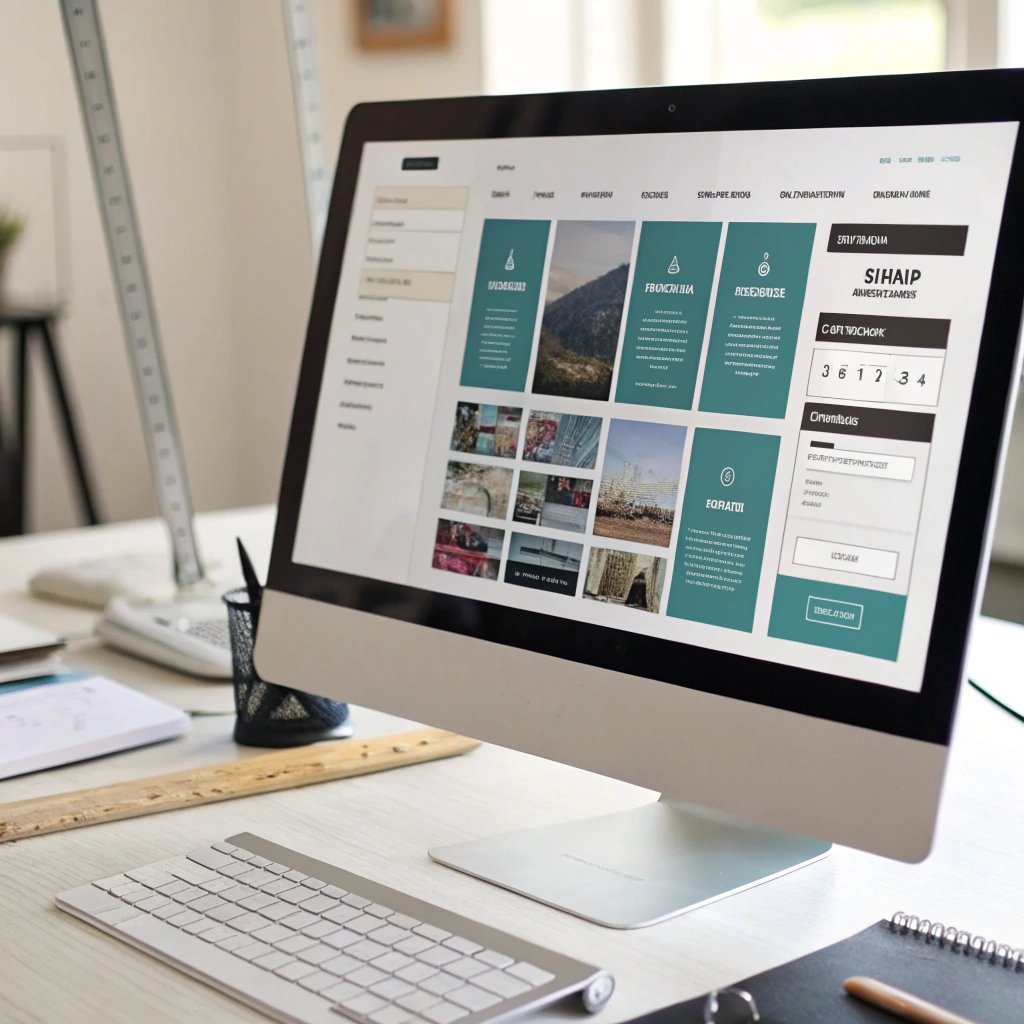In the dynamic world of web design, where user attention spans are short and expectations are high, the importance of structured, visually appealing layouts cannot be overstated. One of the foundational tools that modern web designers rely on to create balanced, efficient, and aesthetically pleasing websites is the grid system. This invisible but powerful structure plays a significant role in how content is organized and experienced on digital platforms.
Whether you’re a solo designer or a full-fledged website designing company in Mayur Vihar, understanding and leveraging grid systems can significantly improve the quality and consistency of your designs.
What Is A Grid System In Web Design?
A grid system in web design refers to a series of intersecting vertical and horizontal lines that divide a web page into columns and rows. These lines provide a framework that helps designers align text, images, buttons, and other elements in a coherent and structured way.
Grids are not new. They have long been used in print media like newspapers and magazines. In the digital age, grid systems are adapted for screens, helping maintain visual harmony and functional consistency across various devices and screen sizes.
Why Grid Systems Matter?
1. Visual Balance and Consistency
Grid systems help maintain visual balance by ensuring that elements are aligned properly and spaced evenly. This consistency enhances readability and ensures that users can easily scan and understand the content.
2. Improved User Experience
When users navigate a website, they unconsciously expect structure. Grid-based layouts guide their eyes smoothly across the page, improving overall navigation and interaction. A clean and predictable structure reduces cognitive load, making the site more intuitive.
3. Responsive Design Efficiency
One of the biggest challenges in modern web design is building layouts that work seamlessly across a range of devices. Grids enable designers to create responsive designs that adapt fluidly, ensuring usability on mobile phones, tablets, and desktops alike.
4. Faster Development
Grids provide a standardized framework that makes the design and coding process more efficient. Developers can build websites faster because the layout structure is pre-defined and predictable.
Types Of Grid Systems In Web Design
Several types of grid systems are used in web design, each serving different purposes:
1. Manuscript Grid
This is a single-column grid that’s ideal for text-heavy layouts like blogs or articles. It provides a clear reading path and emphasizes content.
2. Column Grid
A column grid divides the page into multiple vertical columns, allowing content to be arranged in a variety of configurations. It’s commonly used in websites that need flexibility, such as e-commerce or news sites.
3. Modular Grid
A modular grid adds horizontal divisions in addition to vertical columns, forming a matrix. This is especially useful for complex layouts with mixed media—images, videos, text blocks, etc.
4. Baseline Grid
This grid aligns content based on a consistent line spacing, ideal for maintaining uniformity in typography.
5. Hierarchical Grid
Hierarchical grids are more free-form and are used when the content doesn’t follow a repetitive pattern. They’re often used in creative or portfolio websites.
The Role Of Grid Systems In Responsive Web Design
With users accessing websites from multiple devices, responsiveness is not a luxury—it’s a necessity. Grid systems play a crucial role in responsive design by allowing designers to create flexible layouts that adjust to different screen sizes.
How it Works:
- Fluid Grids: Instead of using fixed pixel-based measurements, fluid grids use percentages. This allows elements to resize relative to the screen size.
- Media Queries: Combined with CSS media queries, grid-based layouts can shift, stack, or reorder elements based on the viewport.
- Breakpoints: Designers define breakpoints where the layout adapts—for example, a 3-column layout on desktop may become a single column on mobile.
A good website designing company in Mayur Vihar would always incorporate responsive grid systems to ensure optimal performance across devices, which is now also a ranking factor in Google’s search algorithms.
Tools And Frameworks For Grid-Based Web Design
Several tools and frameworks simplify the use of grid systems in modern web design. Some of the most popular include:
1. Bootstrap Grid
Bootstrap’s 12-column grid system is one of the most widely used. It offers pre-defined classes that allow for fast and responsive layout building.
2. CSS Grid Layout
CSS Grid is a native layout system supported by all major browsers. It provides full control over both rows and columns, enabling complex and precise designs.
3. Flexbox
Though technically not a grid system, Flexbox is often used in conjunction with grid layouts to manage alignment, distribution, and spacing of items.
4. Foundation by Zurb
This is another responsive front-end framework that offers a flexible grid system with more customization options compared to Bootstrap.
Common Mistakes To Avoid When Using Grid Systems
Even though grids are powerful, misusing them can lead to poor design outcomes. Here are a few pitfalls to avoid:
- Overcomplicating the layout: Just because you can use many columns doesn’t mean you should. Simplicity often yields better results.
- Ignoring mobile-first design: Always start with the smallest screen in mind and scale up.
- Not aligning elements properly: Misalignment breaks the grid’s harmony and disrupts the user experience.
- Inconsistent spacing: Uniform padding and margins are crucial for maintaining visual consistency.
Grid Systems And Design Creativity
Some argue that grids can limit creativity, but in reality, they serve as a launchpad for innovation. Think of grids like grammar in language—you can’t write poetry without knowing the rules first. Grids provide the structure within which creativity can flourish. Designers can intentionally break the grid for emphasis or artistic effect, but only after understanding how to use it correctly.
A skilled website designing company in Mayur Vihar will know when to follow the grid and when to break it, balancing creativity with usability.
What is a grid system in web design?
A grid system is a layout framework that uses columns and rows to organize content for better structure and visual balance.
Why are grid systems important in responsive design?
They help create flexible layouts that adapt seamlessly across different screen sizes and devices.
Which grid system is commonly used in modern web design?
Bootstrap’s 12-column grid and CSS Grid Layout are widely used for building responsive and scalable designs.
Can using a grid system improve website performance?
Yes, it enhances visual consistency and user experience, leading to better engagement and faster development.
Conclusion
Grid systems are the backbone of modern web design. They offer structure, consistency, and responsiveness—elements that are critical to delivering a seamless user experience. From basic blog layouts to complex interactive interfaces, grids simplify design and development, making it easier to create visually appealing and functionally sound websites.
Whether you’re a freelance designer or represent a growing website designing company in Mayur Vihar, mastering the use of grid systems will elevate the quality of your projects. As the web continues to evolve, grid systems will remain a vital tool in crafting engaging and user-friendly digital experiences.






Leave A Comment